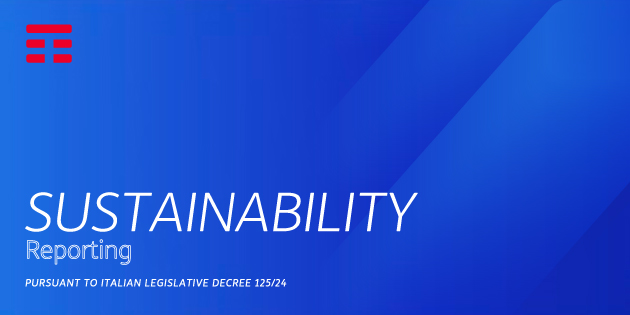TIM’s Board of Directors, which met today under the chairmanship of Salvatore Rossi, unanimously approved the 2024-2026 ‘Free to Run’ Industrial Plan presented by Pietro Labriola, Chief Executive Officer of the Group.
The sale of the fixed network will allow TIM to operate with fewer financial and regulatory constraints and a greater focus on industrial components.
Continuing the transformation journey initiated in the previous two-year period, the new Plan outlines the strategic directions for TIM in 2024-2026. Despite a highly uncertain macroeconomic environment, all economic and financial metrics are expected to improve significantly, while maintaining a solid capital structure.
Below are the financial targets based on the new perimeter (organic data[1], including Sparkle[2]):
- Group revenue to grow 3% CAGR 2023-2026 from EUR 14.4 billion pro-forma in 2023[3]; for TIM Domestic revenues to grow 2% CAGR 2023-2026 from EUR 10 billion pro-forma in 20233. In 2024 Group revenues are expected to rise 3-4% and 2-3% for TIM Domestic.
- Group organic EBITDA After Lease to rise 8% CAGR 2023-2026 from EUR 3.5 billion pro forma in 20233; for TIM Domestic, organic EBITDA After Lease to grow 9-10% CAGR 2023-2026 from EUR 1.9 billion pro-forma in 20233. In 2024 Group organic EBITDA After Lease to rise 8-9%; 9-10% for TIM Domestic.
[1] Excluding exchange rate fluctuations, non-recurring items and change in consolidation area. Group figures @ avg. exchange-rate 5.40 R$/€
[2] Sparkle financials: Revenues ~€ 0.8bn in ‘23 net of intercompany (~€ 0.9bn in ‘26 net of intercompany); EBITDA AL ~€ 0.1bn in ‘23 (~€ 0.2bn in ‘26); CAPEX ~€ 0.1bn in ‘23 (~€ 0.2bn in ‘26)
[3] Preliminary unaudited pro-forma figures
- Organic EBITDA After Lease-Capex up from EUR 1.3 billion pro-forma in 20233 to approx. EUR 2.2 billion in 2026; for TIM Domestic Organic EBITDA After Lease-Capex approx. EUR 1.1 billion from EUR 0.6 billion pro-forma in 20233. In 2024 growth 15-17% is expected at Group level and 11-12% for TIM Domestic.
- Reduction in Group debt, with a Debt/EBITDA After Lease ratio falling to 1.6-1.7x[1] compared to 3.8x[2] in the pro-forma figures to 20233.
TIM estimates a positive Equity Free Cash Flow After Lease both in Italy and Brazil in the Plan horizon.
Regarding the various TIM Group entities, the industrial Plan outlines the following strategic directions:
- TIM Consumer: will continue to stabilize its core business, with a gradual increase in fixed and mobile ARPU, while improving customer convergence between the two sectors. In parallel, the 'Customer Platform' model will be developed, with a focus on 'beyond connectivity’ revenue growth through new partnerships and opportunities in the household and SME sector.
- TIM Enterprise: leveraging its positioning and unique competitive advantages, it will continue its service revenue acceleration driven by further expansion in the ICT market, amplified by positioning in key growth sectors (Cloud, IoT, Cybersecurity). Particular focus will be devoted to the Cloud sector thanks to partnerships with leading global operators and the full operational start-up of Polo Strategico Nazionale (of which TIM is the main shareholder and technology enabler).
- TIM Brasil: further growth in revenues and EBITDA is expected, with double-digit cash-generation growth in the Plan horizon.
At Domestic level, the Plan also envisages a second wave of the cost transformation project, with incremental targets of EUR 400 million to 2026 linked to the simplification and downsizing of cost structures. Special attention will be paid to efficiency in the Consumer area and to the internalisation of resources and skills in the Enterprise area.
TIM will be the TLC operator with the most extensive infrastructure in Italy and will continue to invest in its mobile network, accelerating the development of 5G, relying on the widest spectrum and data transport network in the country, and in the development of its technology ecosystem, which includes an infrastructure of 16 Data Centers spread across the country.
TIM ESG vision acts as a common thread among the Group’s Entities and Companies so that objectives and activities converge towards reducing emissions, seeking results that impact economic and social growth, containing risks and exploiting opportunities arising from the continuous and rapid changes in the ecosystem. The environmental targets outline a clear strategy to reduce emissions over time, confirming as the first step the 100% supply of energy from renewables by 2025 and the final goal of Net zero by 2040. On the gender gap, the Group aims to achieve at least 33% female managers in positions of responsibility. The Plan also foresees the growth on ESG-driven services and products such as solutions for PA and smartcities, for the benefit of citizens, solutions for the digitalisation of museum and archaeological heritage, new digital telephone booths or TIM branded products with a carbon footprint.
[1] Excluding shareholders remuneration. Computed as Group Net Debt AL less expected deleverage from NetCo disposal (€14.2bn, not considering the impact of price adjustments and potential earn-outs), divided by Group Adj. Organic EBITDA AL less NetCo EBITDA AL
[2] Leverage at FY ‘23 based on old Group view
Finally, the Group intends to confirm its world leadership in the sector for Diversity&Inclusion policies with actions dedicated to employees and partnership activities.
Below are the financial targets:




